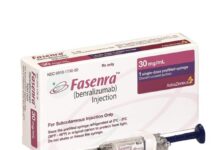SOUTH SAN FRANCISCO, Calif.– Blade Therapeutics, Inc. (“Blade” or “Company”), a biopharmaceutical company focused on developing cutting-edge treatments for debilitating fibrotic and neurodegenerative diseases, today announced receipt of feedback from the FDA regarding the company’s end-of-phase 1 data package for cudetaxestat, an investigational non-competitive autotaxin inhibitor in clinical development for treatment of IPF and other fibrotic diseases. The FDA response letter outlined requirements for a proposed phase 2 PoC/dose ranging study for use of cudetaxestat in patients with IPF. Based on the FDA feedback, Blade plans to advance cudetaxestat into a 26-week global phase 2 trial in patients with IPF in the second quarter of 2022, pending completion of preclinical toxicology studies.
“We are pleased with the guidance provided by the FDA,” said Wendye Robbins, M.D., president and CEO of Blade. “Taking a stepwise approach through multiple phase 1 trials provided significant new knowledge and confidence in the safety profile of cudetaxestat. We are now ready to advance cudetaxestat into a phase 2 clinical study that reflects the clinical treatment needs of patients with IPF.”
The randomized, double-blinded, placebo-controlled phase 2 trial will evaluate the safety and efficacy of cudetaxestat (250mg once daily, 500mg once daily, and 500mg twice daily) dosed as monotherapy or co-administered with an approved IPF therapy (pirfenidone or nintedanib) in patients with IPF. The primary study endpoint is change from baseline to week 26 in forced vital capacity lung volume measured in milliliters (mL) and assessed by clinic spirometry throughout the study duration. A blinded interim analysis will be conducted at 13 weeks after completion of enrollment to assess biomarkers (lysophosphatidic acid target engagement, PRO-C3, and PRO-C6). The study is expected to enroll approximately 200 patients across approximately 90 sites in the United States, Europe, and Asia-Pacific.






